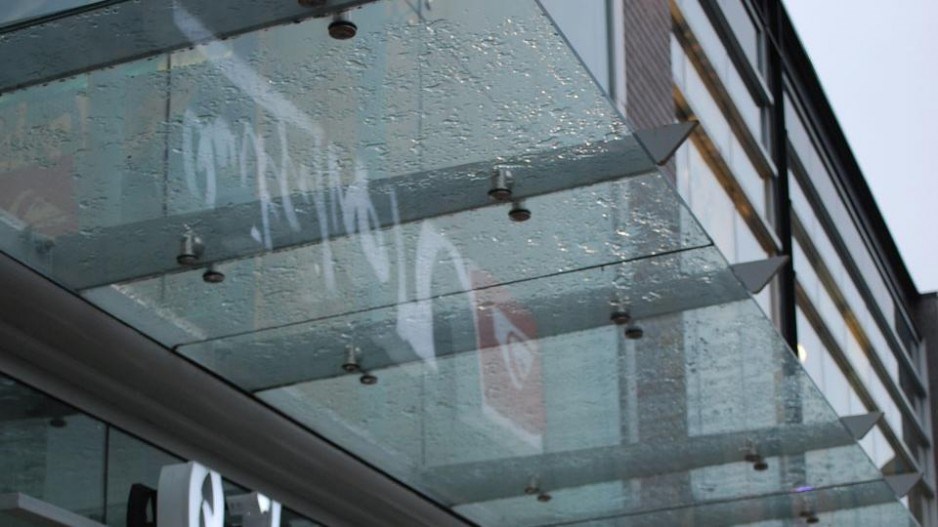Many of the ubiquitous glass canopies and atriums used in British Columbia commercial buildings represent a public safety hazard, a leading structural engineer told a February 26 industry meeting in Surrey.
“This is not an acceptable level of public safety,” said Leonard Pianalto, an associate with Read Jones Christofferson in Vancouver and chair of the Professional Practice Committee for the Structural Engineers Association of BC.
Pianalto, addressing the Fenestration Association of BC, which represents the window, door and glazing industry, said there are two reasons for concern: outdated B.C. building codes that allow inferior glazing materials and a consistent flaw that appears in glass production which can cause “spontaneous failure” of tempered glass, which is widely used in glass canopies, atriums and balconies.
“The codes relate to 1989 technology,” Pianalto explained after his address, “but there are now better materials available.”
In one test of the type of tempered glass widely used to shelter pedestrians from rain and snow on Vancouver streets, the glass canopy collapsed under a 50-pound snow load, he said. “That is not a lot of weight.”
The manufacturing flaw, know as nickel sulfide failure, affects one pane of glass in every four tons of glass manufactured, Pianalto estimated. The tiny flaws are invisible to the naked eye and only represent a threat when the glass is heated to make it tempered glass.
The flaw can be reversed through a process known as heat soaking, he said, but only two B.C. glass manufacturers have the necessary equipment.
Pianalto said Ontario, which experienced a series of tempered glass failures in high-rise balconies, legislated heat soaking in 2012 but there is no such regulation in the works in B.C.
The most widely known failure of a tempered glass atrium in Vancouver was in 2006, when the glass roof of the Plaza of Nations on False Creek was deemed unsafe. That building was demolished after it was deemed too expensive to repair.




